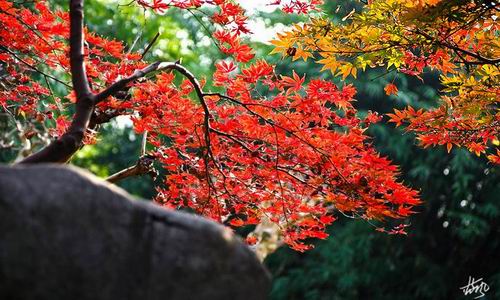The autumn comes late in Shanghai. Usually when north China sheeted down with snow, the autumn of Shanghai will come belatedly. In Shanghai, the time to see red maple leaves and yellow ginkgo leaves is quite short. After a following autumn rain, autumn goes away without nothing left and winter comes.
There are many places for you to appreciate autumn scenery, and most of which assemble in the surrounding areas, such as Qixia Mountain in Nanjing city, Tianping Mountain in Suzhou Mountain, further to Wuyuan County in Jiangxi Province or Tachuan, Hongcun Village in Qianxian County of Anhui Province.
If you are planing a Shanghai to Xian tour, Guyi Garden is a perfect place to view autumnal scenery. Of course, a Xian tour will bring you more surprise, not only the natural scenery.












































